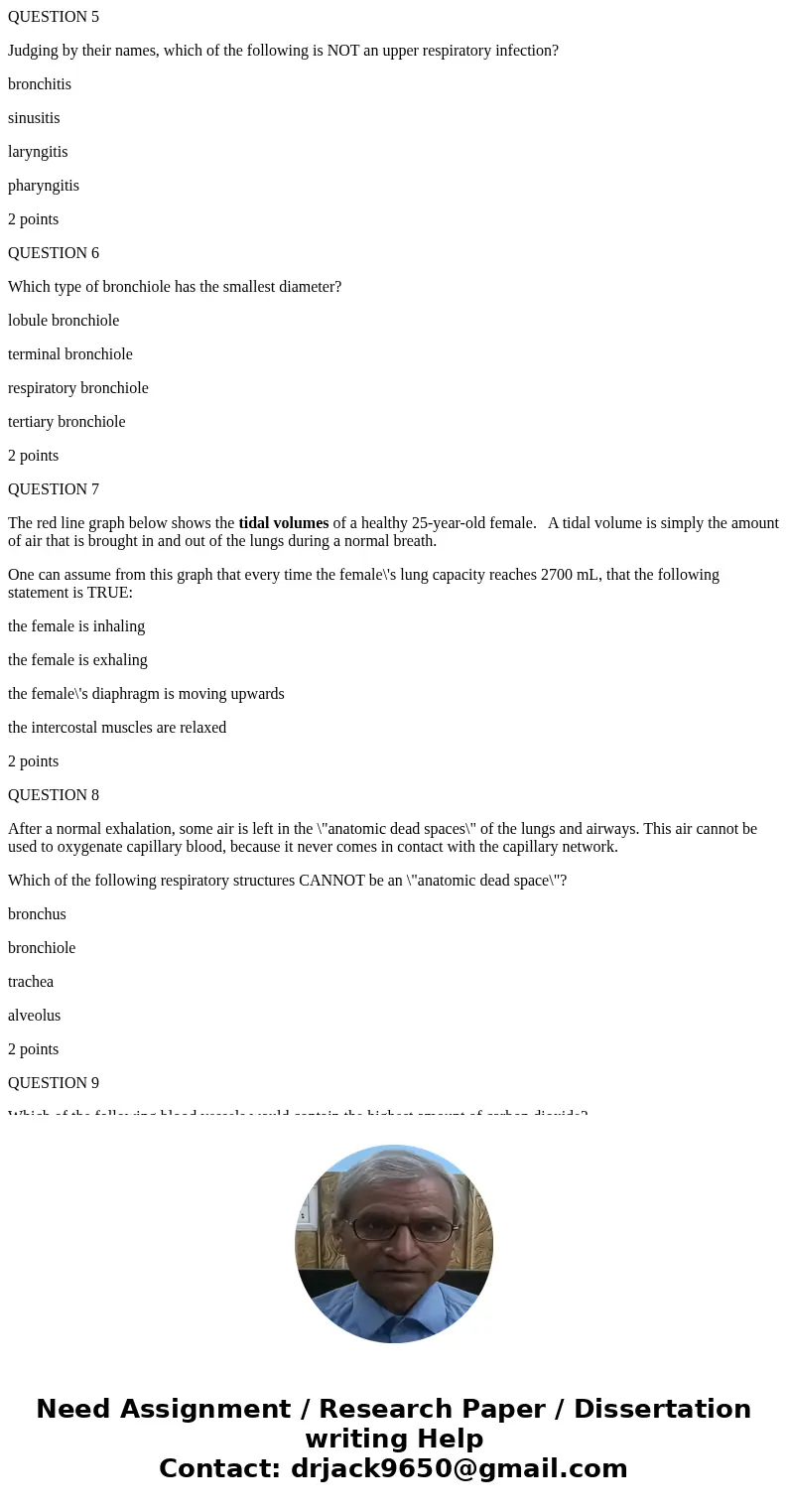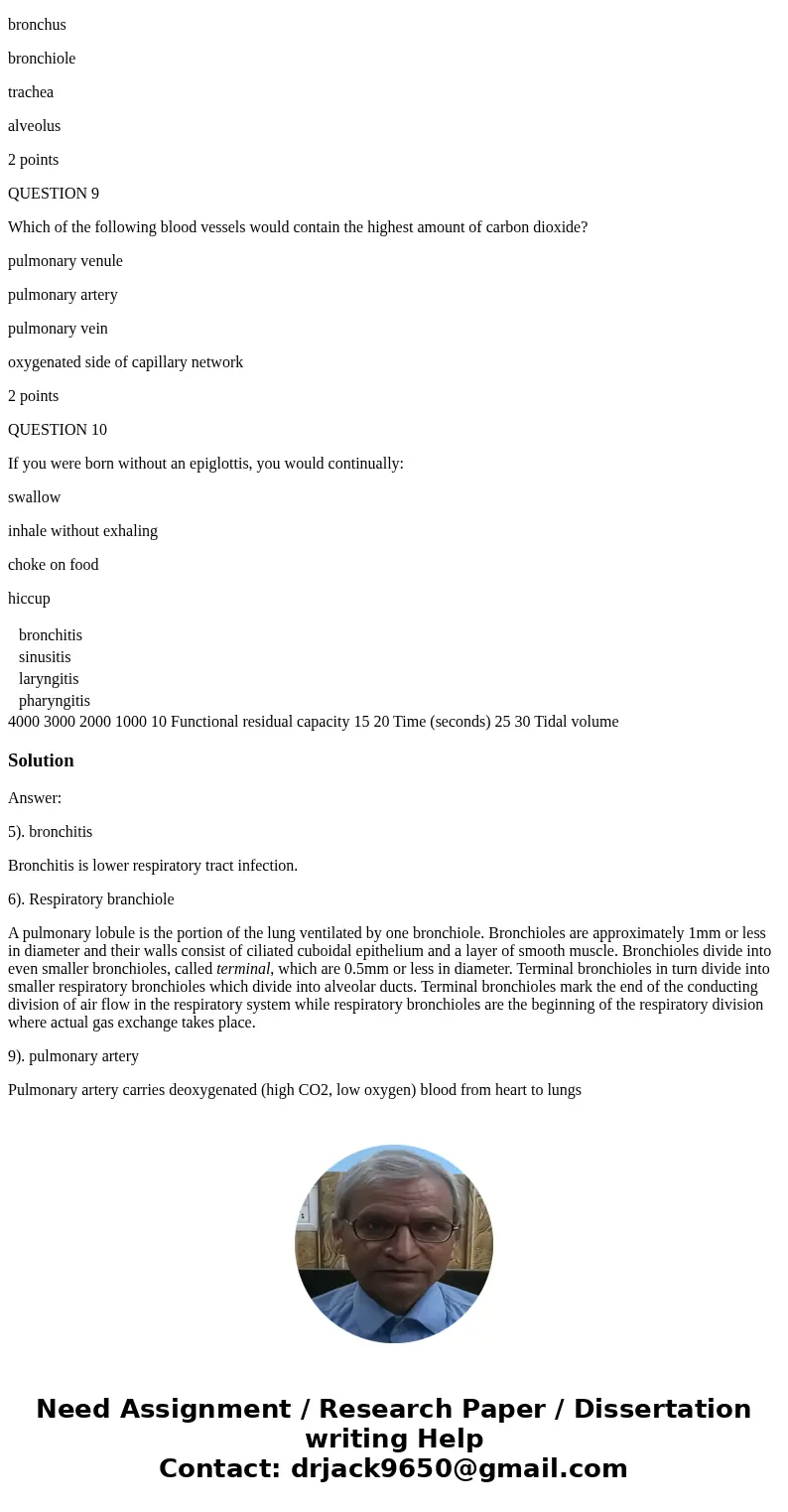QUESTION 5 Judging by their names which of the following is
QUESTION 5
Judging by their names, which of the following is NOT an upper respiratory infection?
bronchitis
sinusitis
laryngitis
pharyngitis
2 points
QUESTION 6
Which type of bronchiole has the smallest diameter?
lobule bronchiole
terminal bronchiole
respiratory bronchiole
tertiary bronchiole
2 points
QUESTION 7
The red line graph below shows the tidal volumes of a healthy 25-year-old female. A tidal volume is simply the amount of air that is brought in and out of the lungs during a normal breath.
One can assume from this graph that every time the female\'s lung capacity reaches 2700 mL, that the following statement is TRUE:
the female is inhaling
the female is exhaling
the female\'s diaphragm is moving upwards
the intercostal muscles are relaxed
2 points
QUESTION 8
After a normal exhalation, some air is left in the \"anatomic dead spaces\" of the lungs and airways. This air cannot be used to oxygenate capillary blood, because it never comes in contact with the capillary network.
Which of the following respiratory structures CANNOT be an \"anatomic dead space\"?
bronchus
bronchiole
trachea
alveolus
2 points
QUESTION 9
Which of the following blood vessels would contain the highest amount of carbon dioxide?
pulmonary venule
pulmonary artery
pulmonary vein
oxygenated side of capillary network
2 points
QUESTION 10
If you were born without an epiglottis, you would continually:
swallow
inhale without exhaling
choke on food
hiccup
| bronchitis | ||
| sinusitis | ||
| laryngitis | ||
| pharyngitis |
Solution
Answer:
5). bronchitis
Bronchitis is lower respiratory tract infection.
6). Respiratory branchiole
A pulmonary lobule is the portion of the lung ventilated by one bronchiole. Bronchioles are approximately 1mm or less in diameter and their walls consist of ciliated cuboidal epithelium and a layer of smooth muscle. Bronchioles divide into even smaller bronchioles, called terminal, which are 0.5mm or less in diameter. Terminal bronchioles in turn divide into smaller respiratory bronchioles which divide into alveolar ducts. Terminal bronchioles mark the end of the conducting division of air flow in the respiratory system while respiratory bronchioles are the beginning of the respiratory division where actual gas exchange takes place.
9). pulmonary artery
Pulmonary artery carries deoxygenated (high CO2, low oxygen) blood from heart to lungs


 Homework Sourse
Homework Sourse